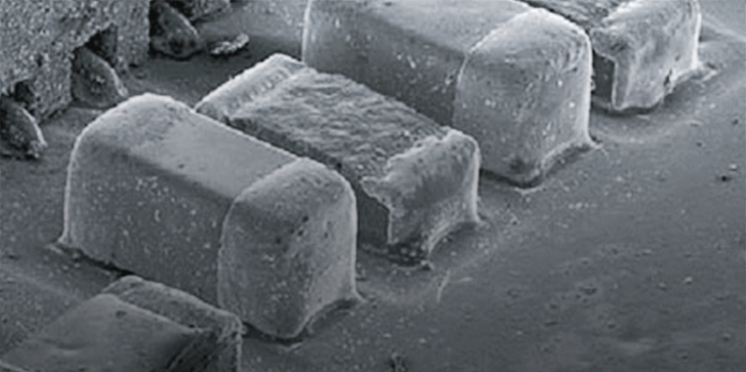beam-rocking technique
beam-rocking technique
A technique that two-dimensionally rocks the incident electron beam over a certain angular range at fixing the beam to a single point on the specimen.
Using a two-stage-deflection beam system, the electron beam is deflected by the first-stage coils and synchronously deflected back parallel to the optical axis by the second-stage coils, and is illuminated at the same specimen position by the prefield of the objective lens (Fig. 1). This is conducted over a certain angular range for two orthogonal deflection directions (x, y).
The technique is used to observe angular variations of ALCHEMI (atom-location by channeling-enhanced microanalysis) signals in the x, y directions, and to obtain LACBED (large-angle convergent-beam electron diffraction) patterns. Angular variations of ALCHEMI signals acquired by the technique are shown in Fig. 2.
Fig. 1. Schematic of the beam-rocking technique.


Fig. 2. Beam-rocking ALCHEMI patterns obtained from SrTiO3. [001] incidence at an accelerating voltage of 300 kV.
In the case of a crystalline specimen, when the beam is tilted against a single point on the specimen by the beam-rocking technique, the obtained signal changes depending on the incidence angle of the beam even from the same measurement point.
(a) Beam-rocking pattern in the bright field.
(b) Atomic arrangement of SrTiO3 projected in the [001] direction.
(c)-(e) Beam-rocking patterns of characteristic X-rays obtained by a combination of the beam-rocking technique and EDS. (c) Sr-Lα, (d) Ti-Kα and (e) O-Kα.
Beam-rocking patterns of the characteristic X-rays are different for the respective elements. At the [001] zone-axis incidence at the center of the patterns, a phenomenon called axial channeling occurs, where the intensity is weak for Sr and Ti and strong for O.
At high scattering angles in the azimuth direction, the intensity variation in the azimuth direction shows narrow intensity bands corresponding to the (100) plane in the Sr and Ti patterns, whereas a broad band corresponding to the (200) plane is seen in the O pattern. This is because the spacing of the atomic plane of O is half the spacing of the atomic planes of Sr and Ti.
Appendix: Axial channeling intensity
At the center of the pattern, i.e. on the zone axis, it is brighter for an O pattern and darker for Sr and Ti patterns. The intensity of the axial channeling depends on the element species and the acceleration of the incident electron beam. When the positional intensity changes of the electron wave (Bloch wave) running in a crystal are calculated for given crystal structures, information about the atomic positions of the specimen can be obtained. For an application example, the positions occupied by additive elements can be identified. [1] [2]
References
[1] M. Ohtsuka, S. Muto, K. Tatsumi, Y. Kobayashi, and T. Kawata, Microscopy 65, 127 (2016).
[2] S. Muto and M. Ohtsuka, Progress in Crystal Growth and Characterization of Materials 63, 40 (2017).
Related Term(s)
Term(s) with "beam-rocking technique" in the description
Are you a medical professional or personnel engaged in medical care?
No
Please be reminded that these pages are not intended to provide the general public with information about the products.




